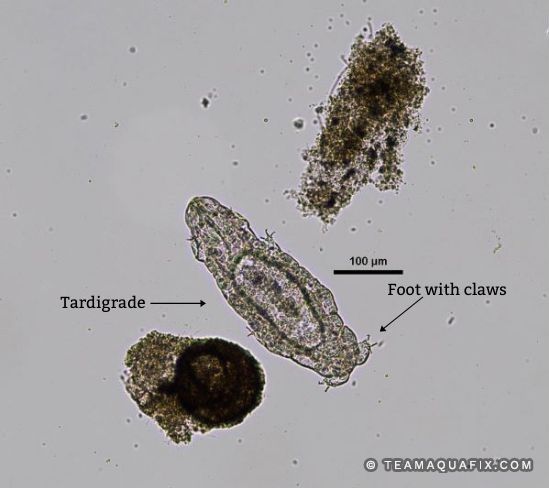
Tardigrades are found in very old sludge and do not like low DO and toxicity.
Tardigrades are indicators of old sludge, increasing wasting to reduce sludge age is the preferred treatment. If you are concerned about your plant conditions contact a technical rep for information and recommendations.
Tardigrades indicate an extremely old sludge age, low ammonia levels, and/or low nutrient levels. Tardigrades will not be found in systems experiencing low dissolved oxygen or toxicity. If tardigrades are observed in a system it is an indication that wasting should be increased to lower the sludge age.
Tardigrades, or water bears, are a type of metazoan that can range from 200-1,200 µm in size and can be identified under 100x magnification. Tardigrades have a plump body with a scrunched-up head and eight legs with four claws on each end. These claws are used to rip open their food, such as rotifers, small nematodes, protozoa, and sometimes other tardigrades. Tardigrades also feed on bacteria and fungi.
Bradford, A. (2017). Facts about tardigrades. Retrieved from https://www.livescience.com/57985-
tardigrade-facts.html
Novozymes. A guide to higher life forms in biological wastewater treatment systems. [PDF].
Schill, R.O. & Hengherr, S. (2019). Water bears: The biology of tardigrades. R.O Schill (Ed.).
Germany:Springer International Publishing

39041 RGE RD 283,
Red Deer County, AB T4E 0M2
Phone: 1-888-466-0031 |
Fax: 1-888-507-9716
To place an order, please fill out the required fields below and proceed to checkout. Ensure all information is accurate, and feel free to contact our support team if you have any questions or need assistance. Thank you for choosing us!